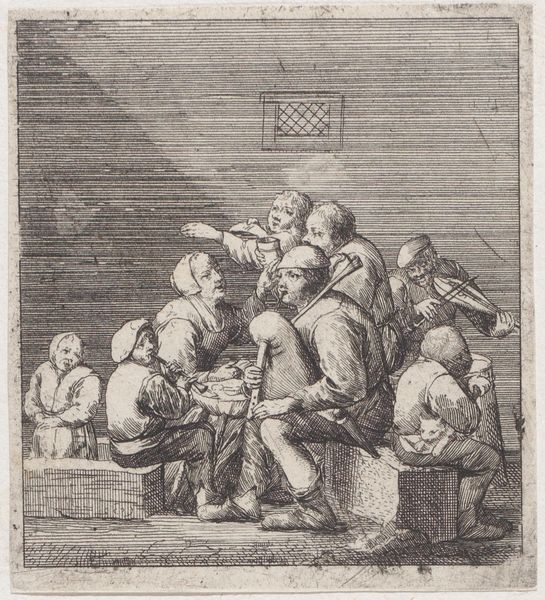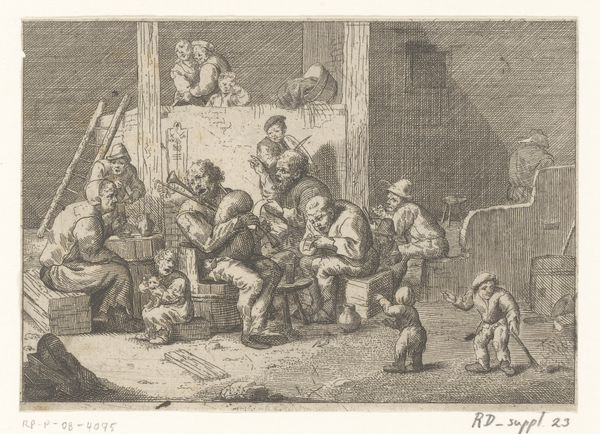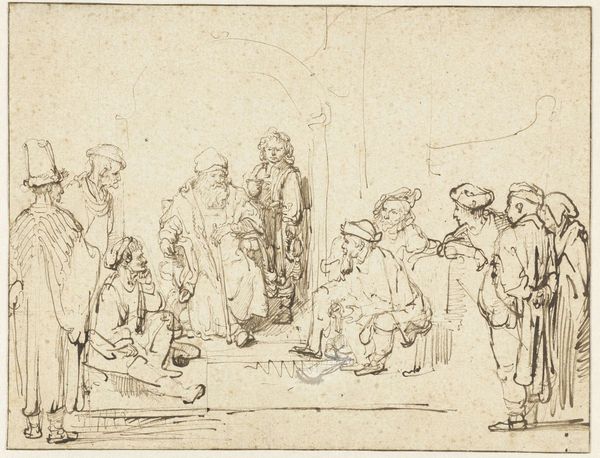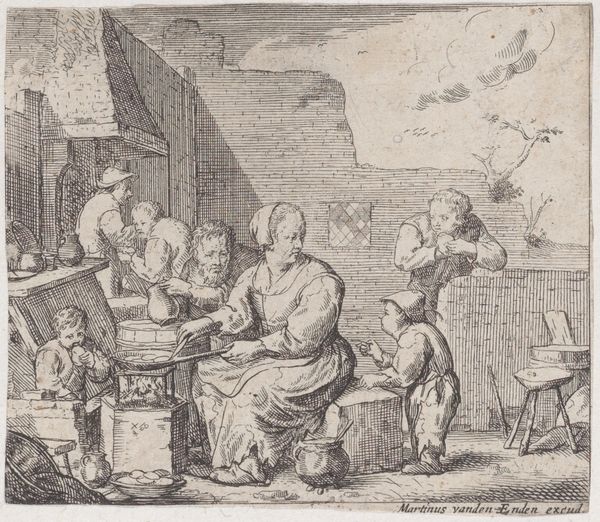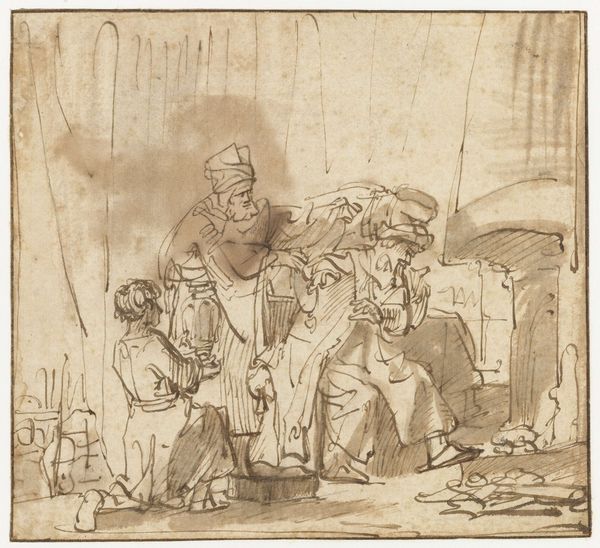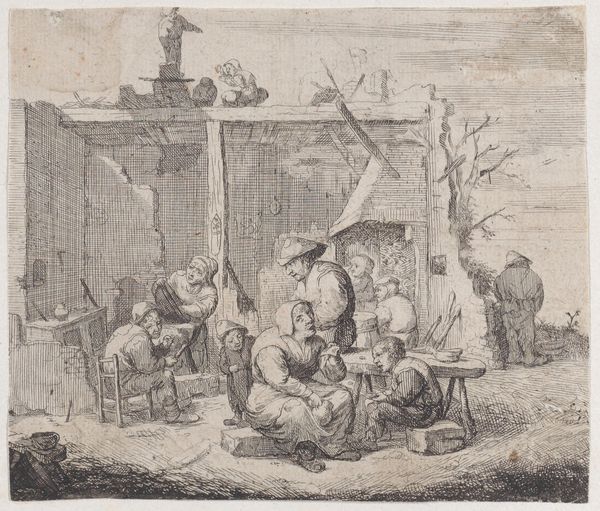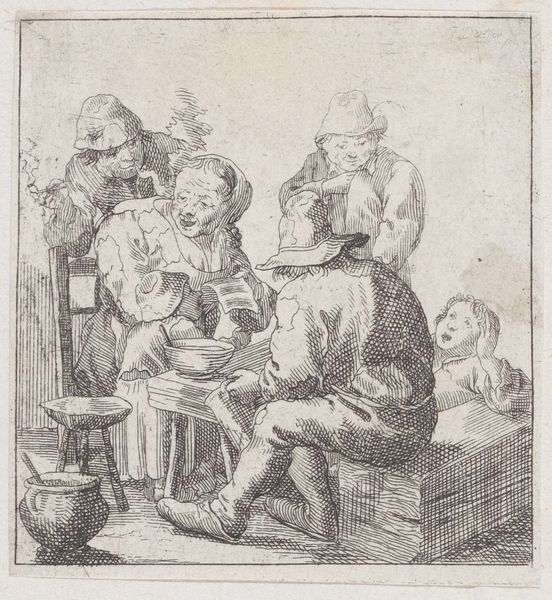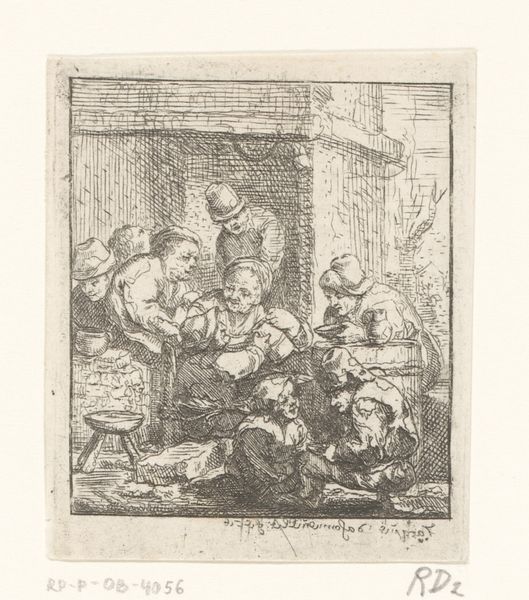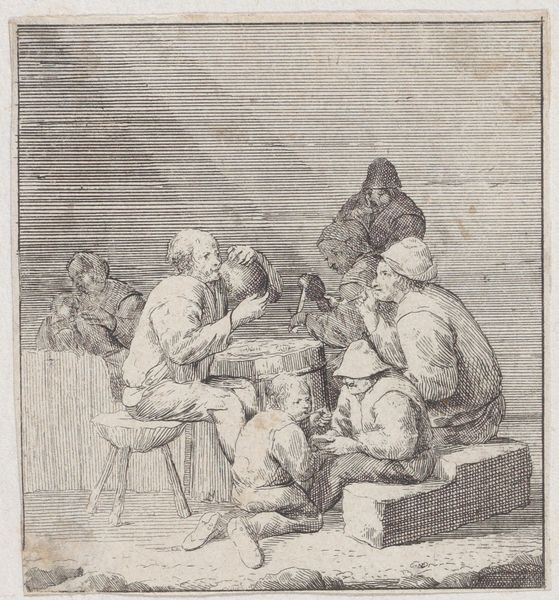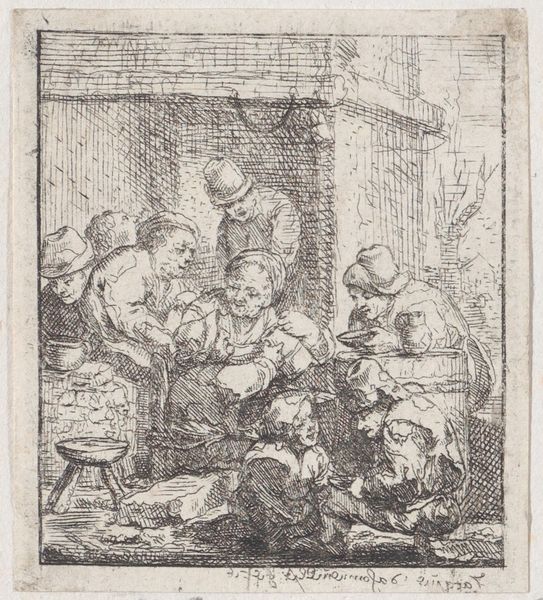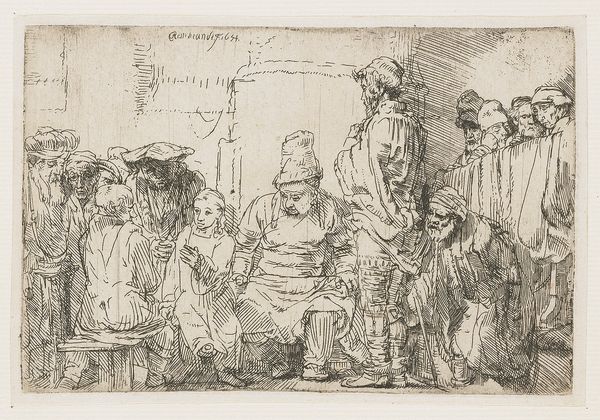
Ten peasants in a ruined house with a seated man at center reading a paper 1635 - 1675
0:00
0:00
drawing, print, engraving
#
drawing
#
baroque
#
dutch-golden-age
# print
#
genre-painting
#
engraving
Dimensions: Sheet (Trimmed): 3 3/16 × 3 9/16 in. (8.1 × 9.1 cm)
Copyright: Public Domain
Editor: We're looking at a print titled "Ten peasants in a ruined house with a seated man at center reading a paper," made sometime between 1635 and 1675 by Jacques Dassonville. It’s currently housed at the Metropolitan Museum of Art. It’s stark – all these people crammed into what seems like a collapsing building. What strikes me most is the quiet amidst the ruin. How do you interpret this scene? Curator: The depiction of peasants within a ruined structure offers a powerful commentary on social inequality during the Dutch Golden Age. Dassonville, through his composition, places the viewer in a position to observe the lives of those often marginalized and disregarded by mainstream historical narratives. Consider how the act of reading itself becomes a symbol. Who has access to information, and how is that knowledge used or withheld within this social hierarchy? Editor: That makes me think about how they’re positioned, the man reading is clearly central, almost like a patriarch. Are you saying the ruin itself symbolizes something about their social standing? Curator: Precisely. The ruined house isn't just a backdrop; it's a metaphor for the precariousness of their existence. Their presence within it forces us to confront the realities of poverty, dispossession, and perhaps even the violence enacted upon the lower classes. Notice, too, how their gazes connect or disconnect – what power dynamics do you observe? How does Dassonville use shadow and light to emphasize these social dynamics? Editor: I see what you mean; the light definitely highlights the man reading and the faces around him. I hadn’t considered it that way, as a form of silent resistance or resilience in the face of hardship. Curator: It encourages us to question the narratives presented by the dominant culture and amplify the voices of those historically silenced. Art becomes a tool for social change when we critically examine these layers of meaning. Editor: This gives me so much to think about, looking at the piece beyond its surface appeal, and understanding it as a mirror reflecting complex societal structures. Thanks for sharing your insight. Curator: And thank you for bringing a fresh perspective. Art thrives on these dialogues!
Comments
No comments
Be the first to comment and join the conversation on the ultimate creative platform.
